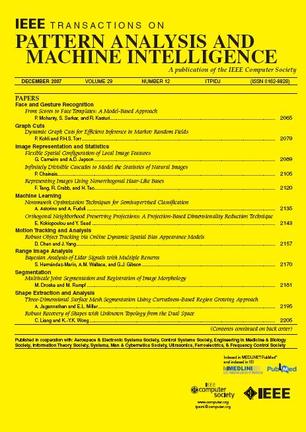Learning from partially labeled data for multi-organ and tumor segmentation
IF 20.8
1区 计算机科学
Q1 COMPUTER SCIENCE, ARTIFICIAL INTELLIGENCE
IEEE Transactions on Pattern Analysis and Machine Intelligence
Pub Date : 2022-11-13
DOI:10.48550/arXiv.2211.06894
引用次数: 1
Abstract
Medical image benchmarks for the segmentation of organs and tumors suffer from the partially labeling issue due to its intensive cost of labor and expertise. Current mainstream approaches follow the practice of one network solving one task. With this pipeline, not only the performance is limited by the typically small dataset of a single task, but also the computation cost linearly increases with the number of tasks. To address this, we propose a Transformer based dynamic on-demand network (TransDoDNet) that learns to segment organs and tumors on multiple partially labeled datasets. Specifically, TransDoDNet has a hybrid backbone that is composed of the convolutional neural network and Transformer. A dynamic head enables the network to accomplish multiple segmentation tasks flexibly. Unlike existing approaches that fix kernels after training, the kernels in the dynamic head are generated adaptively by the Transformer, which employs the self-attention mechanism to model long-range organ-wise dependencies and decodes the organ embedding that can represent each organ. We create a large-scale partially labeled Multi-Organ and Tumor Segmentation benchmark, termed MOTS, and demonstrate the superior performance of our TransDoDNet over other competitors on seven organ and tumor segmentation tasks. This study also provides a general 3D medical image segmentation model, which has been pre-trained on the large-scale MOTS benchmark and has demonstrated advanced performance over current predominant self-supervised learning methods. Code and data are available at https://github.com/jianpengz/DoDNet.从部分标记数据中学习多器官和肿瘤分割
用于器官和肿瘤分割的医学图像基准由于其密集的人工和专业成本而受到部分标记问题的困扰。目前的主流方法遵循一个网络解决一个任务的做法。使用这种管道,不仅性能受到单个任务通常较小的数据集的限制,而且计算成本随着任务数量的增加而线性增加。为了解决这个问题,我们提出了一个基于Transformer的动态按需网络(TransDoDNet),该网络学习在多个部分标记的数据集上分割器官和肿瘤。具体来说,TransDoDNet有一个由卷积神经网络和Transformer组成的混合主干。动态头使网络能够灵活地完成多个分段任务。与现有的训练后固定核的方法不同,动态头部的核是由Transformer自适应生成的,它采用自关注机制来建模长期的器官依赖关系,并解码可以代表每个器官的器官嵌入。我们创建了一个大规模的部分标记的多器官和肿瘤分割基准,称为MOTS,并展示了我们的TransDoDNet在七个器官和肿瘤分割任务上优于其他竞争对手的性能。本研究还提供了一个通用的三维医学图像分割模型,该模型已经在大规模MOTS基准上进行了预训练,并且比目前主流的自监督学习方法表现出了先进的性能。代码和数据可在https://github.com/jianpengz/DoDNet上获得。
本文章由计算机程序翻译,如有差异,请以英文原文为准。
求助全文
约1分钟内获得全文
求助全文
来源期刊
CiteScore
28.40
自引率
3.00%
发文量
885
审稿时长
8.5 months
期刊介绍:
The IEEE Transactions on Pattern Analysis and Machine Intelligence publishes articles on all traditional areas of computer vision and image understanding, all traditional areas of pattern analysis and recognition, and selected areas of machine intelligence, with a particular emphasis on machine learning for pattern analysis. Areas such as techniques for visual search, document and handwriting analysis, medical image analysis, video and image sequence analysis, content-based retrieval of image and video, face and gesture recognition and relevant specialized hardware and/or software architectures are also covered.

 求助内容:
求助内容: 应助结果提醒方式:
应助结果提醒方式:


